Off to see Casino Royale tonight, the air alive with spoilers. So there’s just time to finish the overview of all that has gone before.
GoldeneyeThe last time Bond had a major reboot, and he’d been off the screen for six years. It’s a majestic return, confident and plucky. Goldeneye looks gorgeous, with every shot carefully structured to maximise the glamour. A really beautiful picture to look at.
Bond returns, offering something new for the 90s. Yet it's almost entirely caught up in being about his past. Does 007 still cut the mustard now that the cold war is done?
It feels reassuringly like Bond's greatest hits: shiny satellite super-weapons like Diamonds Are Forever; all the guff about trust like in Licence to Kill; the electro-magnetic pulses threatened in For Your Eyes Only; the hidden dish in Cuba much like the volcano in You Only Live Twice. The base at the end is old-school style Ken Adam.
Yet it does feel very different from what we've seen before, with only Desmond Llewellyn handing over to the new fellow. The cast – mostly comprised of well-known British character actors – really helps raise the standard. And for all it’s a retread of a formula, it's written with depth and intelligence.
I liked how it deals with Britishness and Britain’s role in the world – what is the secret service
for. No longer is Bond running to keep up with the Americans, he's prepared to discuss British weaknesses. There's something new about Bond admitting failures over the Cosacks. For the first time in ages there's a backdrop of political complexity, Bond dealing with the fall out from pragmatic decisions made by his masters before him.
Occasional slips are more notable because of this attention to detail. How does Bond, in a tank, overtake a train?
Like Rob Shearman's Dalek, the writing constantly confronts and challenges the weaknesses of James Bond. M, 006 and Natalya all have a pop at him, the best being M calling him a "sexist, mysoginist dinosaur".
I also like "Her Majesty's terrier," though I expect that more ably applies to Daniel Craig. Brosnan is excellent – deadly serious about the job, but twinkly when circumstance allows. He makes Bond fun again.
It's especially odd to see Bond in the heart of St Petersburg. I like all the stuff about his old enemies now being sort of friends. As we've seen before, Bond was always pro-Detente anyway, and it's a third party causing all the trouble. Would have liked to see him having some vodka and bread with Walter Gotell, though.
And then, at the end, Wade offers Bond and Natalya a lift back to a cosy place called Guantanamo. It's the final line of the film... and I wondered if they'd find Art Malik waiting for them...
Tomorrow Never DiesContinuing on from Goldeneye, the Russians are our allies from the off. Bond helps sort out top brass's foolishness, letting us know he's still best. It takes a long time before we actually
see him, too, so he makes a much stronger entrance.
The non-smoking Bond was noted at the time as a betrayal of what had gone before. But it’s moving with the times, and less strange a decade later. Bond was always a little into the future, and it’s better than him being such a tawdry old reactionary.
Actually, it’s a very confident opening, ballsy and exciting – all the more important considering it’s the first film since the death of Albert Broccoli. There are nice stylistic flourishes throughout, like the slow-motion sequence when the British ship is sinking. David Arnold’s score really helps – the first worthy successor to John Barry.
Again the cast includes a great wealth of talent, even in the minor roles. We get our first sighting of Colin Salmon, who Brosnan once mooted as his replacement. Still think they missed a trick there. Geoffrey Palmer is brilliant, and you can also spot Hugh Bonneville, Julian Rhind-Tutt and the bloke who played Mordred in “Battlefield”.
I wanted to say that it was Ricky Jervais who plays the fiendish Gupta (whose clothes my sister made!). He’s a beardie physicist, so we know he won’t make it to the end of the film. And in Stemper we’ve another blond villain with hobbies in torture and Nazism.
Again there’s a thirty party playing off the big powers: the threat of war here like in “Mind of Evil” (and Bond’s remote control car from “The Daemons”). The wheeze of a war being good for business and the media seems even more relevant today.
The film feels like it’s actually about something – real politics and the world that we live in. The gags about bugs in the software and M’s response to the death of Carver are also nicely judged.
For all Jonathan Pryce’s arched performance, Eliot Carver is a much more credible villain than usual. He doesn’t have piranha fish or walk with a limp, he’s just a weedy little bully who employs lots of burly henchmen. He’s believable as an excitable and spoilt control freak.
To further complicate the plot, Paris is a girl Bond really cares about – continuing the themes raised by Natalya in the last one about how the poor fella’s all on his own. That plays into Carver’s jealousy and insecurities (for all he’s spoken in front of his wife about getting Michelle Yeoh “behind a desk”). Again, these attachments between the characters help make the thing more complex and involving.
As a rule, it’s all nicely balanced between the real and the ridiculous. Dr Kaufman neatly bridges the funny and the sinister, and in his dispatch we see that ruthless steeliness that makes Bond so exciting.
Brosnan moves very gracefully, so can stroll from the printing press like he owns the place when he’s making his daring escape. His remote-control car that’s impervious to sledge-hammers still feels more real than the invisible Vanquish to come later… What’s more, Brosnan is really good at selling the special effects. I love his little cheer when his tyres re-inflate.
Michelle Yeoh is a great foil for him, just as able an agent as he is and quite happy to do her own thing. Bond doesn’t half choose him moments to make a move on her though – stop snogging and save her from drowning!
Again, there are nagging contrivances: that Gupta seen in the pre-title sequence is next working for Eliot Carver. Would Bond and Michelle Yeoh get the bends when they escape from the submarine? And, pedantically, Bond seems lost by her Mandarin (?) keyboard, though he’d studied “Oriental languages” in “You Only Live Twice”. (There’s a gag about his cunning linguini in this one.)
In the car chase, Bond’s bonnet-topped cable cutter is exactly the right height for the cable. And when he’s ditched the car, isn’t the car park he’s on the roof of still swarming with enemy agents?
Despite the car chase, and the fun spree on the motorbike later, another criticism is the lack of a memorable set piece – such a hallmark of a Bond film. But I don’t mind that. Better it’s all driving the plot, than the plot is strung round outlandish moments.
I also really like the closing theme, as sung by kd lang. For all it’s called “Surrender”, the Bassey-like belting out of the words “Tomorrow Never Dies” maybe suggest Arnold came up with two options for the opening. But cor, a Bond film that doesn’t end on a limp little fizzle. Hooray!
The World is Not EnoughOh dear, oh dear. They so dropped the ball on this one.
The pre-titles sequence is utterly magnificent. It’s up and running quickly, Bond over his head in slick, modern Bilbao. Patrick Malahide makes a great cameo villain, and Bond resisting the obvious gags about the cigar girl’s figure makes the audience do the work for him.
It’s a great little sequence, Bond against four toughs, clinically working through them before making a daring escape. The swing down from the balcony is a nice mix of the funny and exciting that the franchise pulls off so well, and again Bronsnan’s demure cool lets him walk off like he owns the whole town. Bilbao in itself could have been the whole sequence, but the film then raises the stakes.
Bond has never been attacked at home before (the last time someone got into his London apartment was a pretty girl playing golf). It’s so iconic – and the sequence in the book of “The Man With The Golden Gun” where an enemy agent gets into the building was stolen for the original title sequence of the “Man from UNCLE”.
We then get the glorious chase down the Thames, full of nice flourishes and detail. With the villain still a mystery and Bond taking a tumble, it sets up the main film very nicely. It’s a much longer effort to the titles than usual – a full 13½ minutes. But it’s been worth it…
And then we’re in rainy Scotland for as long again, with people spoon-feeding the dull background and plot. The grey funeral merely reminded me of the spoof Casino Royale, and there’s a lot of sitting around in the MI6 castle waiting for Bond to get going.
Desmond Llewellyn’s final scene as Q is beautifully written and played (is “Never let them see you bleed” a knock at “Licence to Kill”?) but we’re half an hour into the movie before Bond is back to work. It utterly kills the pace and excitement set up before Garbage start singing. And despite its best efforts, the film never wins back that impetus.
This all seems to be an effort to create deeper and more complex character. We learn a lot about M in this one: that she was at Oxford and is also a mother. It hinges around her feelings for a dead friend, and how she is thus manipulated. This feels like the same trouble they had with Q in the 80s: trying to make his presence more important to the plot and allowing him more time on screen. It doesn’t work.
There’s also a lot of continuity baggage, with returns from Colin Salmon, Michael Kitchen and Robbie Coltrane. Only the latter actually has a part to play in the story, the others just prop up the background. It’s a waste – we don’t see a great deal of cleverness or guile in the corridors of MI6.
It’s also not a very pretty movie: drizzle and oil fields and dirty great industry. Bond has always managed a glamour before, but even the casino here is a bit tawdry. It’s not exactly the aspirational lifestyle that makes us run out to buy the placed product.
The industrial stuff hints at topicality, the plot toying with the fuel supply crisis. But this is all rather swept under the more soap-opera guff about how Sophie Marceau is really a wrong ‘un.
They really trowel it on with her. She can be nice and go to chapel (respectfully veiled, but still showing all her hair); she can be fearless about the pipeline; she can be cross about M’s involvement; and she can be wild and jump out of a helicopter. For heaven’s sake: spot the villainess.
At long last, someone attacks them as Bond and Sophie go for a ski. Actually, we could have skipped all the Scottish stuff, coming from the titles to her and Bond in the helicopter. “I don’t want you here,” she tells him.
“Tough,” replies Bond. “M thinks the people who killed your father will have a go at you. I’m not to leave your side.”
“Oh, really?” says Sophie, and promptly leaps from the helicopter. And Bond has no choice but to follow her. At least that would have got things moving.
When the baddies attack, they’re not very practical. The paragliding ski-machines seem incapable of catching their prey. Like the flying log-cutter later, it feels like too much of an effort to come up with something a bit different looking.
I like how Bond uses the coat John Cleese got lost in, to save them from the avalanche. And it’s nice to see Bond turning down a shag with Sophie (and not just ‘cos he’s getting too old). Except that a moment later they do shag, all erotically and done with ice. She’s making all the moves, so you can tell that she’s a wrong ‘un.
I guess it’s setting up that she’s just as ruthless about getting whatever she wants. It just makes Bond look a bit stupid.
He’s then off investigating like Bond does so well, and it’s good to see him using his resources and faking an ID. He then gets to meet Christmas Jones – so barely fleshed out as a character that she can only have been created for the film’s two woeful puns. In fact, I think the whole plot may have been conjured around that.
Reynard is too much of a one-note villain, a henchman not a villain in himself. That’s a remarkable waste of Robbie Carlyle. They struggle to make something of his unlikely injury, Sophie snogging him with ice just like she did with Bond. But for all the theatrics, we don’t feel any great love for Sophie. Which is what the whole thing rather relies on.
M’s kidnap makes M look stupid, and Bond falling for Sophie makes him just as much of a tool. So all this clever-clever character stuff had made everyone less impressive. Bond lingers over Sophie’s corpse when he finally kills her, when he should just march smartly away. Better to see him as a cold fish and wonder at the feelings within.
There’s then a last fight with Reynard and everything put right with the world. M returns to Scotland (for no very good reason – shouldn’t she be in London this time?), and she’s somehow lost Bond on the journey. They were in Istanbul together!
And then there’s the terrible gags. Cleese gets to finish on one about the Millennium bug – which just dates the film really horribly. There’s plenty I like – Coltrane, Goldie, even the X-ray specs. But it started so brilliantly well, and then fails to deliver the same standard. Such a shame.
Die Another Day The opening surfing sequence is not especially wowing to look at (though I appreciate a sod to get filmed), and serves only to underline the paltriness of the later CGI.
The film in general has a gritty, dour feel – another in the long line of films promising a return to the bastard James Bond of the books. I assume the very treated look is due to overdone digital grading. Look at Toby Stephens as he launches the Icarus – the image grainy and bleached and too played with.
I’m guessing “Colonel Moon” is a riff off Kingsley Amis’s pseudonymous Bond novel, “Colonel Sun” (although that, with a kidnapped M, seemed more of an influence on the last one).
I like the mission going wrong, and Bond having to take on a whole army. The hovercraft are a nice new trick, and it’s a really good opening sequence. It could have finished with Bond swinging from his bell, but they suddenly do something very exciting. Bond is captured and goes off to years of being tortured. Suddenly what he gets up to has consequence.
It really feels new and daring. Which is a shame, because the film then consciously apes its past. The 20th film is written around set pieces from previous films in the series, and is littered with references and quotes. The franchise has been going so long, every film struggles to be wholly original. Is it wise to eat itself on purpose?
While it lasts, the Bond-on-the-run is electrifying. Brosnan retains Bond’s dignity when bearded and bruised, whether put in front of a firing squad or strolling into a classy hotel. The latter has the Bond theme playing because, clearly, he is still The Man. I like how Michael Madsen’s line, “You’d think he was some kind of hero,” plays against what we know of Bond and how Brosnan plays him.
M is much stronger behind the glass of his quarantined room. Even when she comes in to see him, she’s still a tough and unyielding boss. It makes her a much more powerful figure than she’s been thus far, and though her role in the film is much smaller than previously, she’s a much better character for it.
Like in “Licence to Kill” (an ominous phrase) Bond’s 00 status is rescinded. There’s something a bit… magical about how he escapes, and I’m not sure having a heart attack makes him very powerful. It’s all very dour and realistic, apart from when it isn’t.
Generally, in this first half of the movie things are kept real, and though it’s never stated explicitly, it’s all very conscious of 9/11. It dares to face North Korea as the enemy and to say things like, “One man’s terrorist is another man’s freedom fighter”. So there’s a great deal of weight behind all that Bond’s up to.
So by the time we get to Cuba, he’s in need of light relief. It’s great seeing him wearing Hawaiian shirts and driving classic cars, and still being indelibly Bond. And after what feel like an age he goes birding. Jinx has a surprising line in single entendres, and the sex scenes between them are more explicit than they’ve ever been. We normally cut away.
After a fun action sequence through the hospital, Bond heads home to the sound of the Clash. I like Madsen offering to sort out the rogue agent if M cannot, and also the punky verve and energy as it all sets off in London. At this point, all bets are still off about where the movie’s going.
The sword fight is silly and again Madonna can only say what she sees, as if this is somehow witty. But the real change of pace is when Bond is called into the abandoned Tube station. Suddenly all is forgiven, and we’re back in silly gags about gadgets and a smug rollcall of dusty old props. Bond’s response to the world having changed – “Not for me!” – is meant to make him a hero, but it also makes him sound like a relic from the previous century.
I don’t mind the invisible car.
The sequence of baddies getting into MI6 is thrilling, especially the dead Salmon and Moneypenny. It’s a rubbish cheat only to be a dream, especially as it’s a set-up for a crap gag later. How far Samantha Bond has fallen since keeping Bond at arms length in “Goldeneye”. And how much more thrilling, Bond having regained his friends’ trust, to lose everything again so suddenly.
Then Bond is off to Iceland, and Rosamunde Pike is the clearly tagged wrong ‘un. She doesn’t want to shag him, so there must be something dodgy. I’m not sure why Toby Stephens allows Bond to roam so freely about his secret base, but I like the subtle clues as to who he really is.
But, like the last one, the strong and engaging start fails to deliver at the end. It’s almost like the production team chicken out of their new ideas, and have to play it safe. It’s all just knocking down the blatantly set-down pins.
Chasing about ensues, culminating in some terrible CGI that even Brosnan cannot sell. But we’re soon into a great car chase where Bond is matched for gadgets. I especially love the use of the ejector seat.
Having saved Jinx and clocked in at work, Bond is then out to finish off Toby Stephens. It’s all pretty predictable, and the CGI plane is really ropey. Is the escape from the back of the plane in a helicopter a riff on “Living Daylights”? In that, they escape in a jeep, which is a much more ballsy effort.
The latter half of this one, especially, feels like Bond films you’ve seen before just not done quite as well. Brosnan is always a class act, but the writing hasn’t done him justice, continually undercutting his professional cool with weakness and stupidity. He looks and sounds perfect, but he says the crassest things.
He’s last to be seen as Bond snuggled up to Jinx, labouring at dialogue which subtly conveys the impression she doesn’t want him to withdraw his fat dick from inside her vagina.
But actually – arf! – she’s talking about some diamonds she’s got in her belly button. Ho hum. He deserved better.
ConclusionSo what have I discovered in working my way through this lot?
I like all the 007s themselves, though Lazenby feels more like a Bond rip-off than a Bond of his very own. Can’t choose a favourite from the others; an unthinkable thought in my teens!
And my revised list of favourites are: Goldfinger; You Only Live Twice; The Man With The Golden Gun; Octopussy; The Living Daylights; Tomorrow Never Dies. And my least favourite is A View To A Kill. Not sure Goldfinger counts, because it’s so far above the rest of the series. I’d choose Octopussy over Golden Gun if only allowed one movie per actor.
And I’m giddily excited ‘bout tonight!
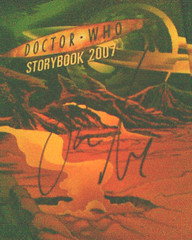 Hope your Christmi were as splendid as ours, brimming with red wine and roast goose.
Hope your Christmi were as splendid as ours, brimming with red wine and roast goose. 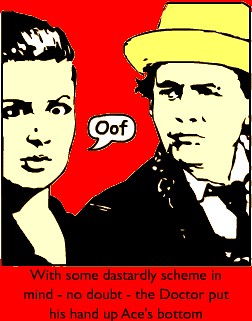

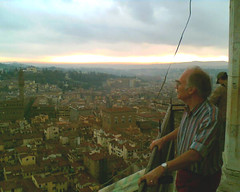


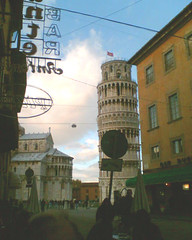
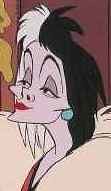 Just imagine! Someone would be looking up the things she's said or written, and instead they'd find me going on about, oh I don't know, something like how she used to get teased for looking just like
Just imagine! Someone would be looking up the things she's said or written, and instead they'd find me going on about, oh I don't know, something like how she used to get teased for looking just like 